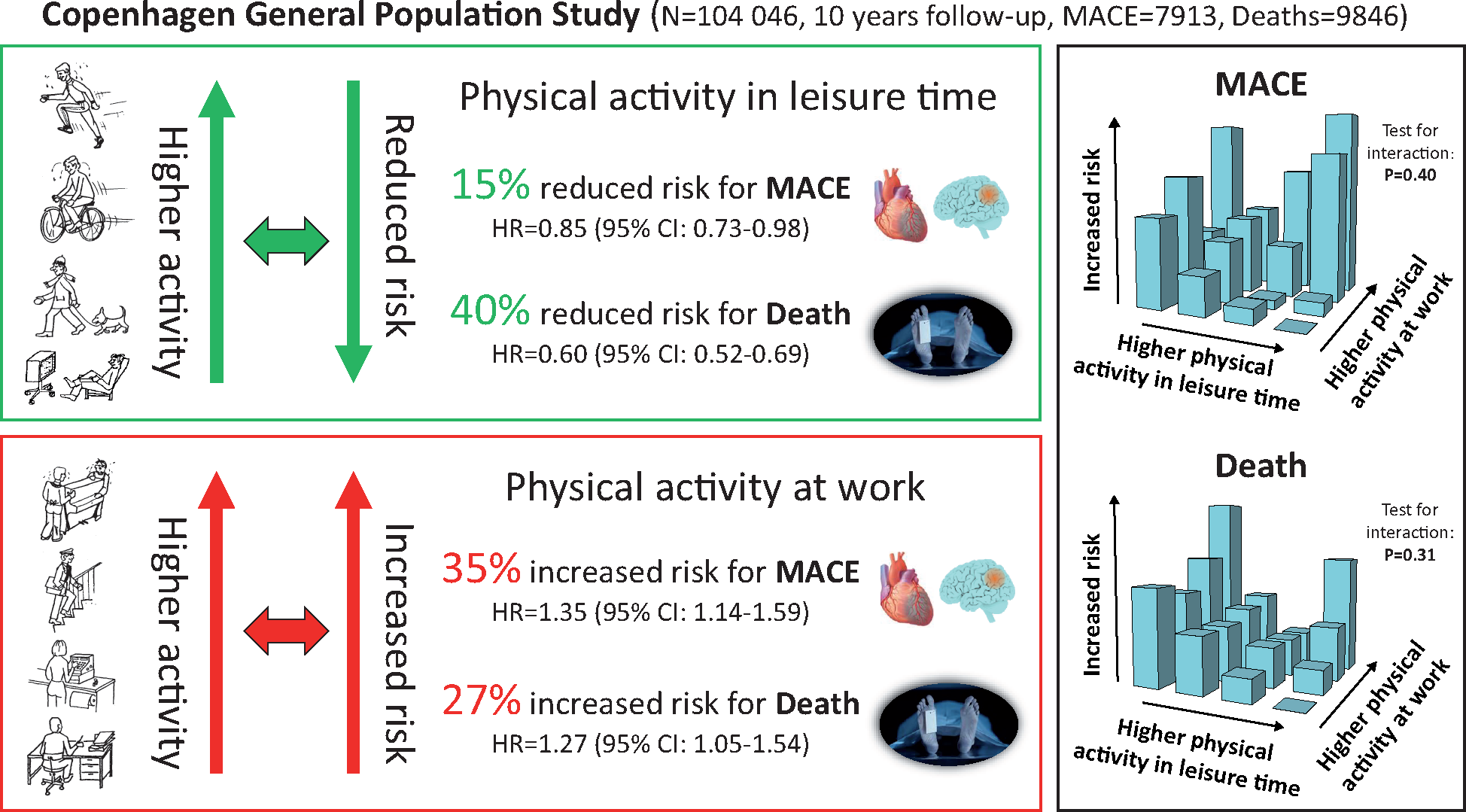The physical activity paradox in cardiovascular disease and all-cause mortality
9th of June 2021

The physical activity paradox in cardiovascular disease and all-cause mortality: the contemporary Copenhagen General Population Study with 104 046 adults
by Andreas Holtermann, Peter Schnohr, Børge Grønne Nordestgaard and Jacob Louis Marott
Article related to the NIVA online webinar and on-site workshop on The Physical Activity Health Paradox, 6th – 9th of September 2021
Abstract
Aims
Leisure time physical activity associates with reduced risk of cardiovascular disease and all-cause mortality, while these relationships for occupational physical activity are unclear. We tested the hypothesis that leisure time physical activity associates with reduced major adverse cardiovascular events (MACE) and all-cause mortality risk, while occupational physical activity associates with increased risks.
Methods and results
We studied 104 046 women and men aged 20–100 years in the Copenhagen General Population Study with baseline measurements in 2003–2014 and median 10-year follow-up. Both leisure and occupational physical activity were based on self-report with four response categories. We observed 7913 (7.6%) MACE and 9846 (9.5%) deaths from all causes. Compared to low leisure time physical activity, multivariable adjusted (for lifestyle, health, living conditions, and socioeconomic factors) hazard ratios for MACE were 0.86 (0.78–0.96) for moderate, 0.77 (0.69–0.86) for high, and 0.85 (0.73–0.98) for very high activity; corresponding values for higher occupational physical activity were 1.04 (0.95–1.14), 1.15 (1.04–1.28), and 1.35 (1.14–1.59), respectively. For all-cause mortality, corresponding hazard ratios for higher leisure time physical activity were 0.74 (0.68–0.81), 0.59 (0.54–0.64), and 0.60 (0.52–0.69), and for higher occupational physical activity 1.06 (0.96–1.16), 1.13 (1.01–1.27), and 1.27 (1.05–1.54), respectively. Similar results were found within strata on lifestyle, health, living conditions, and socioeconomic factors, and when excluding individuals dying within the first 5 years of follow-up. Levels of the two domains of physical activity did not interact on risk of MACE (P = 0.40) or all-cause mortality (P = 0.31).
Conclusion
Higher leisure time physical activity associates with reduced MACE and all-cause mortality risk, while higher occupational physical activity associates with increased risks, independent of each other.

Online webinar on the topic, 6th – 7th of September 2021:
On-site workshop on the topic, 8th – 9th of September 2021
Location: Marienlyst Strandhotel, Helsingør, Denmark
